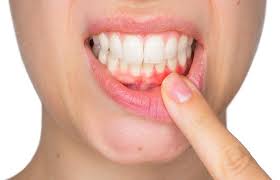
Understanding Periodontitis (Pyorrhoea)
Periodontitis, often historically referred to as “pyorrhoea,” is a serious gum disease in which inflammation and infection affect not just the gums, but the deeper supporting structures of the teeth — including the periodontal ligament and alveolar bone. While early gum disease (gingivitis) is limited to gum inflammation and is reversible, once it advances into periodontitis, permanent damage to bone and connective tissues may occur. If left untreated, periodontitis can lead to loose teeth, tooth loss, gum recession, and even systemic health implications.
Causes & Risk Factors
- Bacterial plaque accumulation: The primary cause is inadequate oral hygiene, allowing plaque to accumulate along and below the gum line.
- Tartar (calculus) formation: Over time, plaque hardens into calculus, which cannot be removed by brushing alone.
- Host response & inflammation: The body’s immune and inflammatory response to bacteria can damage tissues.
- Risk-enhancing factors: Smoking, diabetes, hormonal changes, genetic predisposition, immunocompromised states, poor nutrition, stress, and certain medications can increase susceptibility or worsen disease progression.
Symptoms to Watch For
Periodontitis often progresses silently, but common signs include:
- Gums that bleed easily during brushing or flossing
- Persistent bad breath (halitosis)
- Red, swollen or tender gums
- Gum recession (gums pulling away from teeth)
- Formation of periodontal pockets (spaces between gums and teeth)
- Loose or shifting teeth
- Discomfort or pain when chewing
- Presence of pus around gums
- Changes in bite or tooth alignment over time
If you notice any of these signs, early dental evaluation is key to avoiding irreversible damage.
Diagnosing Periodontitis
At Gentle Care Family Dental, diagnosing periodontitis typically involves:
- Medical & dental history review, including risk factors (smoking, diabetes, medications).
- Clinical examination: The dentist probes around each tooth with a periodontal probe to measure pocket depths (healthy is usually 1–3 mm; pockets >4 mm may indicate disease).
- Radiographic (X-ray) imaging to assess bone loss around teeth.
- Periodontal charting and staging to classify severity, guide treatment decisions, and monitor progress.
Once the diagnosis is established, a personalized treatment plan is devised, often involving multiple phases and periodic reevaluations.
Treatment Options for Periodontitis (Pyorrhoea)
Treatment aims to arrest disease progression, reduce infection, restore healthy gum attachment, and preserve the teeth. Depending on severity, approaches include non-surgical and surgical modalities.
1. Non-Surgical Interventions
These are the first line of defense in mild to moderate cases:
- Scaling (debridement): Removal of plaque and tartar from tooth surfaces and below the gumline with ultrasonic or hand instruments.
- Root planing: Smoothening of exposed root surfaces to discourage bacterial recolonization and promote gum reattachment.
- Adjunctive antibiotics: Local (antibiotic gels or chips placed in pockets) or systemic antibiotics may be prescribed to reduce bacterial load.
- Host modulatory therapy: This tactic works by moderating the body’s destructive inflammatory response (for example, sub-antimicrobial dose doxycycline) rather than only attacking bacteria.
- Laser or photodynamic therapy: In select cases, lasers may be used to target diseased tissue, disinfect pockets, or assist healing with less invasiveness.
These treatments often require multiple sessions and careful follow-up.
2. Surgical & Regenerative Procedures
When non-surgical therapy isn’t sufficient, surgical options may be needed:
- Flap surgery (pocket reduction surgery): The gums are lifted back to gain better access to roots for cleaning, then repositioned to reduce pocket depth.
- Bone grafting: Use of bone (autograft, allograft, or synthetic) to rebuild areas where bone has been lost.
- Guided tissue regeneration (GTR): A biocompatible membrane is placed to prevent soft tissue from crowding the area, allowing bone and connective tissue to grow back.
- Soft tissue (gum) grafts: To repair or replace lost gum tissue and reduce root exposure.
- Platelet-rich plasma or growth factors: In advanced care, bioactive agents may assist tissue regeneration.
In the case of laser-assisted new attachment procedure (LANAP), an Nd:YAG laser is used to selectively remove diseased tissue, disinfect pockets, and promote regeneration.
After any surgical procedure, follow-up maintenance is essential to prevent recurrence.
Post-Treatment Care & Maintenance
Success depends heavily on patient cooperation. Key steps include:
- Excellent daily oral hygiene: Brushing twice daily with a soft brush, interdental cleaning (floss, interdental brushes), and antimicrobial mouth rinses as directed.
- Periodic professional cleanings / supportive periodontal therapy: Usually every 3–6 months, or more often if needed.
- Lifestyle modifications: Quitting smoking, controlling diabetes, improving nutrition, managing stress and systemic health conditions all improve treatment outcomes.
- Regular dental monitoring: Ongoing assessment of pocket depths, gum health, bone levels, and early intervention if signs of recurrence appear.
While periodontitis can’t always be “cured” in the sense of fully undoing lost tissue, its progression can be halted, managed, and stabilised with good care.
Why Choose Gentle Care Family Dental?
At Gentle Care Family Dental, our approach to treating periodontitis is patient-centered, evidence-based, and compassionate:
- We begin with a comprehensive evaluation to assess severity and identify risk factors.
- We tailor a stepwise treatment plan, starting with the most conservative methods and escalating as needed.
- We utilize latest techniques and technologies, such as laser-assisted decontamination or regenerative therapies where suitable.
- We emphasize education and prevention — empowering you with habits and strategies to keep disease at bay.
- We prioritize long-term maintenance and monitoring, because gum health is a lifelong journey, not a one-time fix.
Final Thoughts
Periodontitis (pyorrhoea) is more than just bleeding gums. It’s a chronic infection that can erode the very foundation of your teeth. But it doesn’t have to mean tooth loss. With early diagnosis, appropriate professional treatments, and diligent home care, you can control the disease, protect your smile, and preserve your dental health for the long term.
If you suspect signs of gum disease — persistent bleeding, receding gums, loose teeth, or bad breath — don’t wait. Seek evaluation from your Gentle Care Family Dental team promptly to begin the path toward healthier gums and stronger teeth.


